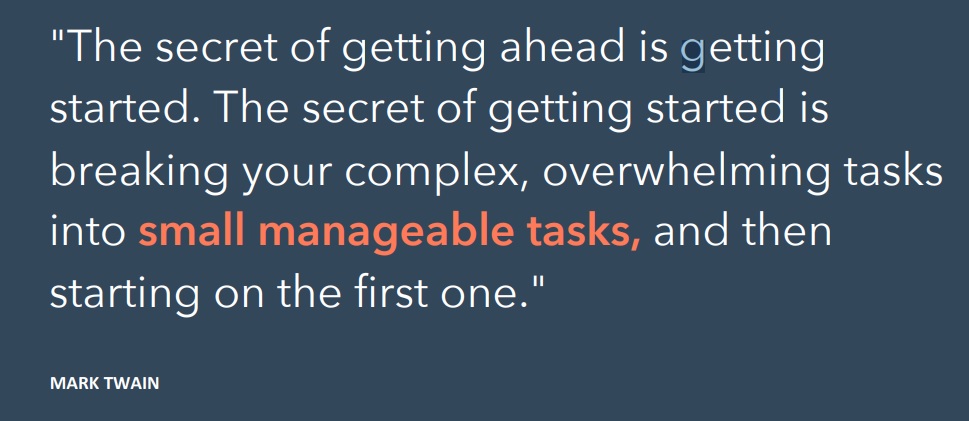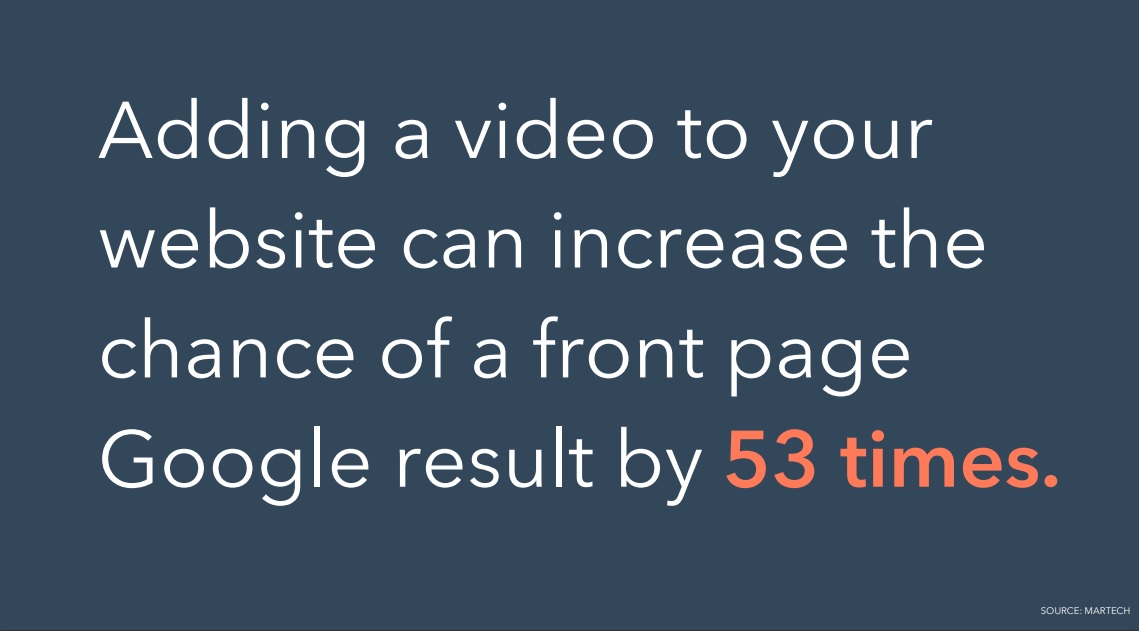Effective Video Marketing Strategy for Small Business Growth
- Home
- Effective Video Marketing Strategy for Small Business Growth
Importance of Video Marketing Strategy
In the digital age, a well-planned strategy has to include video is no longer an option; it's a necessity. Videos build trust with your audience, unlike text-based content. They create an emotional connection with viewers, which significantly enhances the level of trust between you and your customers.
Building Customer Trust through Engaging Videos
The first step towards building customer trust is producing engaging video content that resonates with them. This involves understanding their needs, preferences, and pain points and addressing them directly within your videos. By doing so, you're showing empathy toward their situation while demonstrating how your product or service provides solutions.
This process establishes credibility for your brand, showing potential customers that you understand their challenges and are equipped to solve them. It's not just about peddling wares or offerings; it's about furnishing worth through informative and diverting material. It's worth noting that this applies to both organic and paid campaigns.
Emotional Connection as a Key Factor in Successful Video Marketing
An effective way to forge an emotional bond with viewers is to tell compelling stories through your videos. Storytelling has always been at the heart of human communication—we connect more deeply when information is presented in narrative form rather than dry facts or statistics.
A great example would be charity campaigns, which often utilize emotionally charged storytelling techniques in their promotional films. These techniques make audiences feel invested enough in the causes they're promoting to take desired actions, like donating. Achieving similar results within business contexts requires careful planning from the outset: identifying core messages needing conveying before deciding the best ways to present them visually via videography mediums.
SEO Benefits of Video Content
In today's digital landscape, SEO is crucial for online success. Integrating video content into an effective SEO strategy can provide significant benefits and help you stand out in the crowded online marketplace.
Boosting SEO rankings with quality video content
High-quality videos on your website enhance user experience and boost search engine rankings. Google's algorithm favours websites with diverse and engaging content, including videos. Unique, captivating video material increases the probability that visitors will stay on your page for a more extended period - an essential element in enhancing your Google position.
- User engagement: Videos keep users on pages longer than a text-based content marketing strategy.
- Bounce rate: Lower bounce rates signal to search engines that visitors find value in your site's content.
- Social shares: Engaging videos often get shared across social media platforms as part of a broader social media strategy, building backlinks and improving SEO performance.
Achieving front-page Google results through strategic use of videos
Videos increase the chance of achieving a front-page Google result by 53 times. This statistic highlights the power of videos in claiming real estate on search engine results pages (SERPs). Achieving these results requires careful planning and execution, from keyword research for titles and descriptions to ensuring technical aspects like sitemaps are correctly implemented. Check out this comprehensive guide by Moz: Beginner's Guide To SEO.
To summarize, incorporating video into your digital marketing strategy provides an excellent opportunity for businesses to boost their online visibility. It enhances user experience and is critical in boosting SERP rankings, ultimately leading to improved business outcomes.
Creating Purposeful Video Content
Quality and purpose are crucial factors that determine the effectiveness of video content. By focusing on these aspects during production, businesses can ensure their message resonates with viewers while achieving desired goals such as increased engagement or conversions.
Ensuring High-Quality Production for Impactful Messaging
For successful digital marketing, a high-quality standard is essential, mainly when producing video content that captivates and accurately conveys your brand's message. This is especially true when it comes to video content creation. A good video can make all the difference in grabbing viewers' attention and effectively conveying your company's message.
To achieve this, consider working with a professional videographer who understands lighting, sound design, and editing techniques. These elements contribute significantly to potential customers' overall perception of your videos' quality.
Defining Clear Purposes for Each Produced Video
Purpose-driven content, created as part of a content framework, is more likely to engage audiences and lead them toward conversion. Before making any video material, clearly define what you want it to accomplish - educating consumers about a new product or service, sharing customer testimonials, or providing an inside look at your company culture.
- Educational Videos: Informative pieces like tutorials or how-to guides help establish your brand as an industry expert, building trust among potential customers. For inspiration, check out TED Talks.
- Testimonial Videos: Sharing real experiences from satisfied clients can be incredibly persuasive in convincing prospects about the value of your offerings. See how Apple does it.
- Culture Videos: Showcasing what makes your business unique helps humanize the brand and foster emotional connections with viewers. Take a look at Google's approach.
No matter what type of video you're producing, always keep in mind its intended purpose throughout every stage—from pre-production planning through post-production edits. Doing so will ensure that every second spent watching contributes to achieving defined objectives efficiently and effectively.
The key to effective video marketing is creating high-quality, clearly defined content. By working with professional videographers and focusing on educational, testimonial, or culture videos, businesses can capture their audience's attention while building trust and emotional connections with potential customers.
Remember to remember the desired goals throughout every production stage for maximum impact.
Using Videos to Enhance Post-Conversion User Experience

Once prospects have been converted into customers, the journey continues, with videos helping to improve their post-conversion user experience.
The journey continues even after conversion, and videos can play a significant role in enhancing it. Tailored visuals can help clients visualize themselves using your products or services more effectively, fostering brand loyalty.
Enhancing User Experience with Post-Purchase Visual Aids
Video content is critical after a customer makes a purchase. Post-purchase videos provide additional value to your customers by showing them how to best utilize their new product or service.
- Tutorial videos: Step-by-step guides on how to use your product or service.
- FAQs: Address common questions about your product/service in video format.
- User-generated content: Encourage happy customers to share their own experiences with the product/service through video testimonials.
Fostering Brand Loyalty Through Tailored Product/Service Usage Guides
Post-conversion videos also serve another important purpose - building brand loyalty. When customers are provided with care and appreciation after making a purchase, they tend to remain loyal.
- Create personalized 'Thank You' videos expressing gratitude towards each individual customer for choosing you over competitors.
- Publish regular updates about any improvements/new features added onto existing offerings so current users stay informed & excited about what's coming next.
Utilizing strategic video content during post-conversion stages is integral to forming holistic inbound marketing strategies designed specifically for overall business growth objectives.
Planning Your Business's Video Creation Process
Creating business-related videos may seem daunting, but defined goals make the process manageable. Understanding your target audience allows better alignment between topics chosen for videography projects, leading to improved outcomes from pre-production to post-production.
Identifying Target Audiences Before Starting Any Project Management Tasks
Determining the target demographic should be the initial step when creating a video marketing plan, as this information provides direction for all decisions made during production and distribution. This information guides every decision you make throughout the creation process, from topic selection to distribution channels. By understanding your audience's needs, interests, and online behavior patterns, you can create content that truly resonates with them.
A great tool for identifying your target audience is Google Analytics. It provides valuable insights into demographic data, such as age range, gender ratio, and geographical location of visitors, which helps refine your video content strategy.
Choosing Appropriate Topics Based on Demographic Data Analysis
Once you've identified your target audience, it's time to decide what to speak about. The key lies in choosing subjects directly related or beneficial to those watching. For instance, if young professionals interested in career development tips make up a large portion of viewers, providing advice on job interviews or resume building could prove highly engaging.
- Analyze trending topics: Use tools like Google Trends, Twitter hashtags, or Reddit threads relevant to your industry for inspiration.
- Solve problems: Your product/service probably solves a problem, so why not create how-to guides explaining just that?
- Tell stories: Narratives engage people emotionally, making them more likely to remember details compared to straightforward informational pieces alone.
- Showcase success stories: If customers have had positive experiences using products/services offered by yourself already, showcasing their testimonials would certainly help build trust amongst potential buyers too.
In conclusion, knowing who watches your videos and the issues they face daily enables businesses to choose appropriate subject matter, increasing engagement significantly during future releases.
To create a successful video marketing strategy, businesses must first identify their target audience using tools like Google Analytics. Once the audience is identified, appropriate topics can be chosen based on demographic data analysis and trending topics to increase engagement during future releases.
Telling stories or showcasing success stories are also effective ways to emotionally engage viewers and build trust among potential buyers.
Analyzing and Measuring the Success of Your Videos
Creating visually stunning videos is only half the battle. The real victory lies in understanding how your audience interacts with them and whether they're achieving their intended purpose. This requires a thorough analysis of key performance indicators (KPIs) at every stage of the video creation process.
Implementing Analytics Tools During All Phases Involved in Film-Making Cycles

The use of analytics tools is crucial for measuring the success of your videos. These tools provide valuable insights into viewer behavior, including watch time, click-through rates, engagement levels, email marketing follow-ups, and more. They also help you understand where viewers drop off so that you can make necessary adjustments to keep them engaged longer.
To implement these measures effectively:
- Pre-production: In this phase, it's important to define what success looks like for each video project. Set specific goals based on your overall marketing strategy and decide which metrics will best measure those goals.
- Production: This involves tracking progress towards meeting those goals throughout the production process using relevant data collection methods such as surveys or user testing sessions.
- Post-production: This final phase includes analyzing collected data against set KPIs - thereby determining if targets were met successfully or not while identifying areas needing improvement too.
Beyond just quantitative measures, though - qualitative feedback plays an equally vital role here. Encourage viewers' comments/feedback since they offer direct insight into what resonates most with audiences besides indicating potential areas requiring tweaks/enhancements further down the line too.
A comprehensive approach towards measuring video success goes beyond merely counting views; instead, focusing on truly understanding viewer behaviors/preferences thus enabling marketers to craft content better aligned with target demographics' needs/wants moving forward.
So remember - producing great-looking films is not enough; they need measurable success indicators too. Understanding whether targets find them interesting requires thorough analysis measures being implemented throughout every phase involved within their creation cycle itself.
Creating visually stunning videos is only half the battle. To measure the success of your video marketing strategy, it's crucial to implement analytics tools at every stage of the film-making cycle and analyze key website performance indicators (KPIs) such as watch time, click-through rates, engagement levels, and viewer feedback. A comprehensive approach towards measuring video success goes beyond merely counting views; instead, focusing on truly understanding viewer behaviors/preferences thus enabling marketers to craft content better aligned with target demographics' needs/wants moving forward.
FAQs in Relation to Video Marketing Strategy
What is Video Marketing Strategy?
A video marketing strategy is a plan that incorporates engaging and relevant video content into your overall marketing efforts, identifying target audiences, defining clear purposes for each produced video, and implementing analytics tools during all phases of film-making cycles.
Why is Video an Important Marketing Strategy?
Video is crucial in building customer trust, fostering brand loyalty, enhancing user experience post-purchase, and boosting SEO rankings, making it key in successful digital marketing campaigns.
How to Create a Marketing Strategy Video?
To create a strategic video, start by identifying your audience demographics, choose appropriate topics based on this data analysis, then ensure high-quality production for impactful messaging, and implement analytics throughout the creation process to measure success.
Why Will Video Marketing Be Important in 2023?
In 2022 alone, online videos are predicted to make up more than 82% of all consumer internet traffic, 15 times higher than it was in 2017, indicating that video marketing will continue being critical beyond 2022, including the year 2023.



